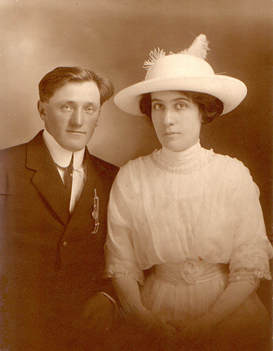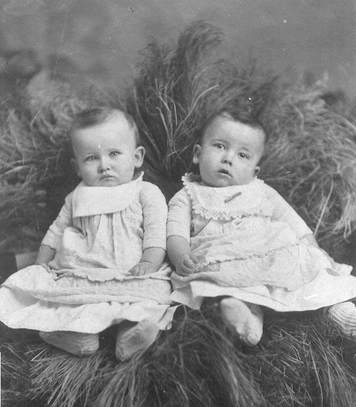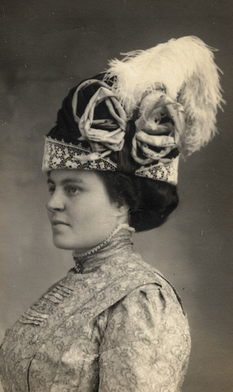 Photo by Austin Distel on Unsplash https://useproof.com/ A recent webinar speaker talked about his research and the importance of genealogy proof when researching ancestors. We haven’t talked about this for a long time, so I thought it would be a good topic this week. Let’s look. In the webinar, he gave examples of family names that are challenging to search for, names that were common in everyday life. Imagine having the last name of Lake or Barber or Miles. I thought my Sullivans and Cotters (Smiths of the Irish world) were challenging but nothing like these names. So how do you know if you have the right family?
Location. Location is usually helpful. If you can tie the family to a particular piece of land or location, this creates a proof point when determining if it is the family. Those of us who have farm families are lucky to have this added proof point. You might have something similar in a city if you already know the address. First names. First names are helpful if you find multiple families with the parents of the same name in a given location. Which one is yours? You need to look at the ages, the children’s names and ages to help determine if these are your people. And sometimes things still do not match. I have Irish Canadian ancestors who were different ages with each census (and I don’t mean 10 years older.) Often, they were a few years older instead of ten years older. How did I know it was still my family? They were tied to specific property and the children were the correct names and ages. Just Mom and Dad were creative about their given age. The parents’ birth dates become yet another track of research to prove their birth information. Documents. As family historians, we like to have more than one document that helps solidify a date or an event. It always is better to have two or three documents that support information than one document. The creation date of the document is to the event, the more accurate it is likely to be. What do you do if you do not find a death record or a specific document that gives a death date. You then turn to exhaustive proof. In the death date example, you haven’t found a grave, burial record, obituary, will or a death record. This person was born 200 years ago so we can safely say they have passed. Are there other things you could look at? Do you suspect they died young because there were no more children, or the spouse remarried? Or do you have land records that have been transferred to someone else? While they might not give a death date, they might state that the person is deceased. Then you need to go backwards to see when the last record was that this person participated in. You would then have a range for your date of death. And sadly, this might be all that you have but you’ve exhausted all known records and then write a conclusion about what was found and what you can determine. Sources. Those family trees on popular sites can be useful tools and clues for your own research. However, any good researcher knows that you cannot just add this information without studying the source documents. And guess what…many trees do not have source documents or worse, they’ve added events to their tree based on the name and the hint, not ensuring this information is about their ancestors. I have seen trees where someone has a death date in Illinois, then five years later they are alive and working in California, only to be deceased ten years later in Canada. Magic! While I’m sure you do not do that, be aware that some folks haven’t perfected the art of genealogical proof and have taken everything at face value, whether it makes sense or not. Genealogy Proof is a big and complex topic. Here are some additional resources. Mastering Genealogical Proof by Thomas W. Jones, published by the National Genealogical Society Special Topics Series. This book has been in print for a while but is available yet to purchase. I like that it includes worksheets and examples for you to try to ensure that you understand the topic. I think it is helpful to look at these processes without the distraction of your own family research. Genealogical Proof Standard [Visual Guide] - Genealogy Explained This educational site includes a process chart which gives you specific steps depending on your ancestors. If you are a visual person, this might be more useful. Understanding the Genealogical Proof Standard (familysearch.org) FamilySearch has provided a three-part series about Genealogical Proof. While this is a few years old, the information is still accurate and useful. How to Prove Your Family Tree Connections (thoughtco.com) This article provides great information regarding the types of sources and their meaning as sources. Example: Original vs Derivative, Primary vs Secondary, Direct vs Indirect Connecting the Dots: What Constitutes Genealogical Proof? | Legacy Tree This article focuses on common sense of genealogical proof. I hope this has given you some ideas to keep in mind when doing your family history research. Part of the reason that we love genealogy is the search and puzzles. Sometimes we won’t have all the puzzle pieces but will find enough to help us get a better picture of our ancestor’s life. Happy Researching!
0 Comments
Leave a Reply. |
AuthorWith a lifelong passion for genealogy and history, the author enjoys the opportunity to share genealogy tidbits, inspiring others to research and write their family story. Archives
July 2024
Categories |



 RSS Feed
RSS Feed